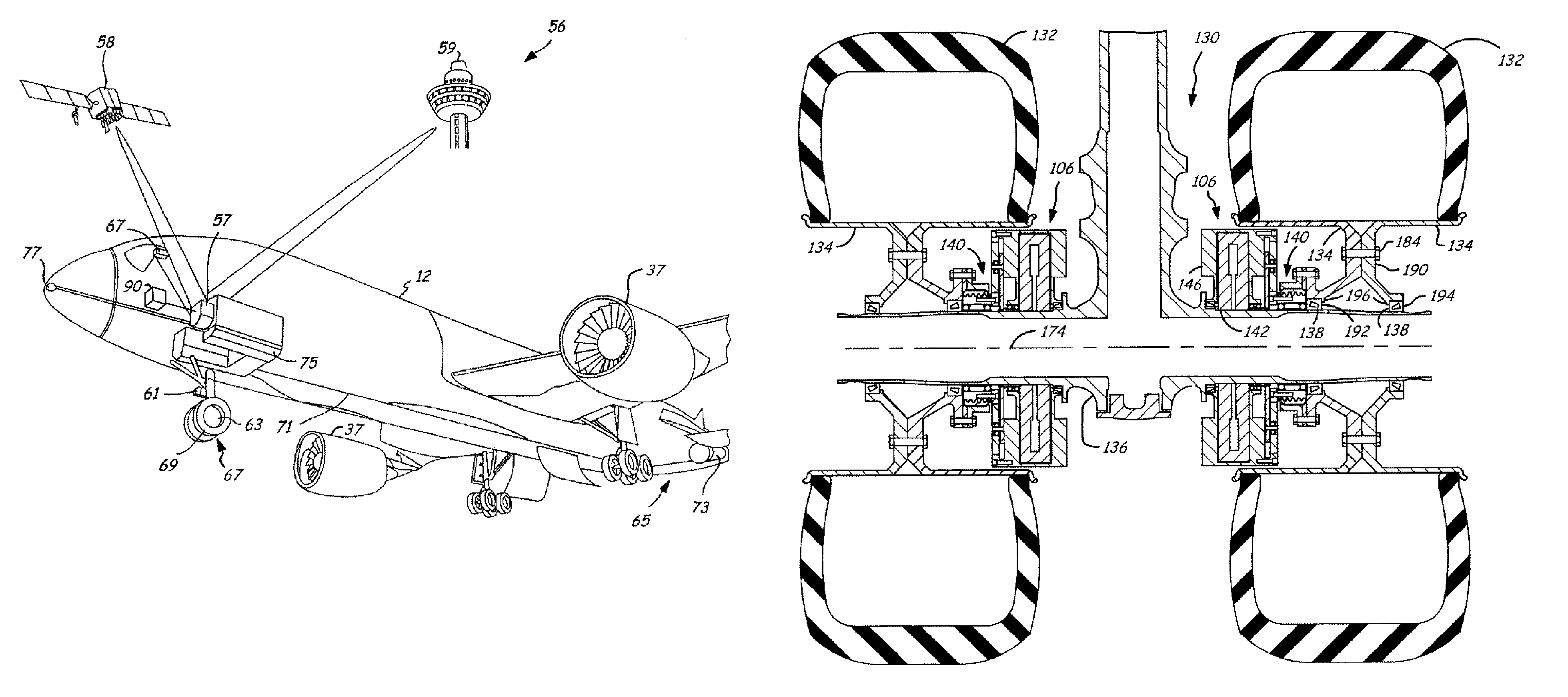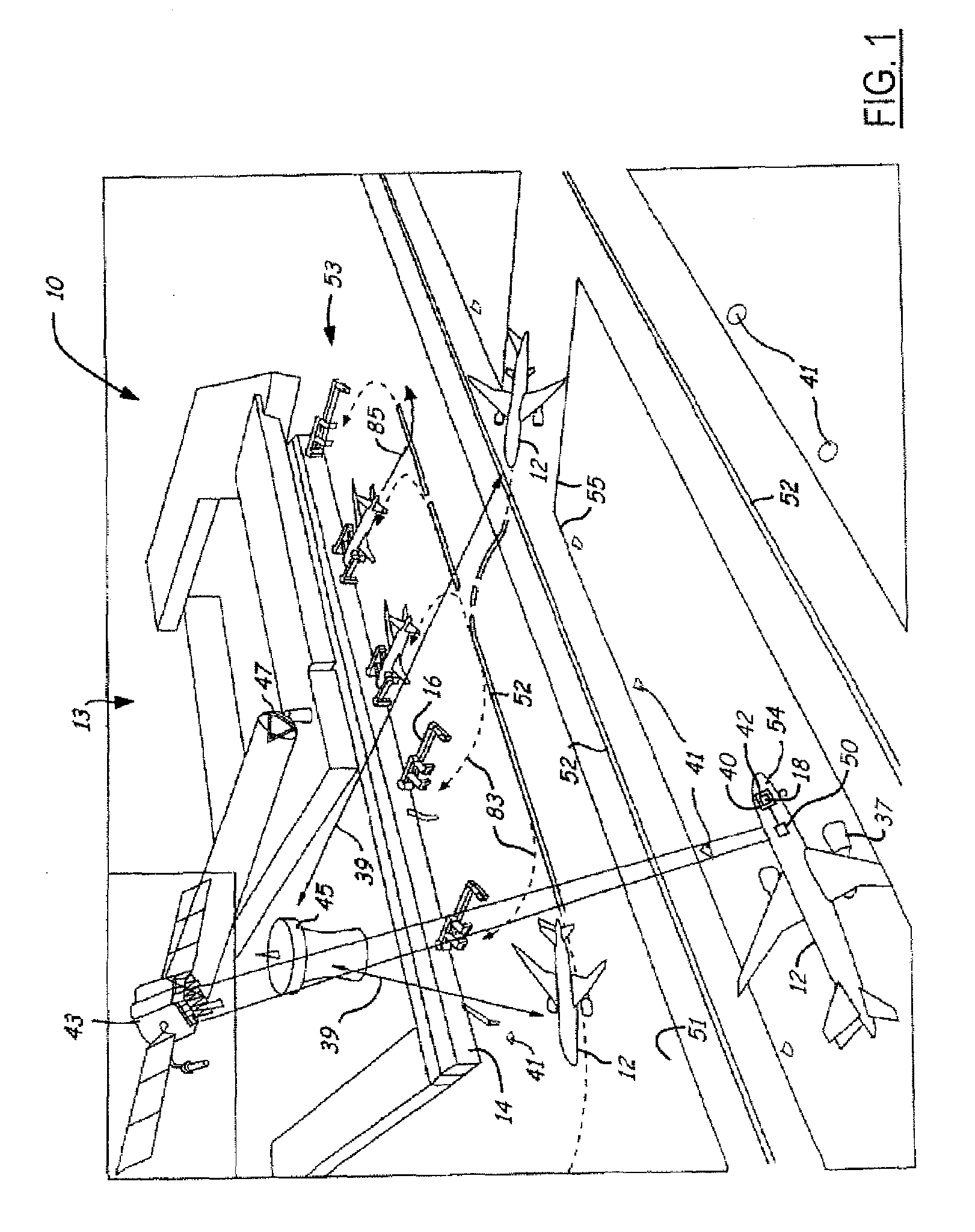Powered nose aircraft wheel system
a technology of aircraft wheels and aircraft, which is applied in the direction of skis/runners, energy-saving operational measures, aircraft braking arrangements, etc., can solve the problems of aircraft repair costs, aircraft maneuvering during ground operations can pose significant expense, fuel costs, noise reduction costs, etc., to improve the efficiency and productivity of ground operations, reduce ground operational fuel costs, noise, air and ground water pollution, and improve the effect of arrival and departure efficiency and productivity
- Summary
- Abstract
- Description
- Claims
- Application Information
AI Technical Summary
Benefits of technology
Problems solved by technology
Method used
Image
Examples
Embodiment Construction
[0025]In each of the following Figures, the same reference numerals are used to refer to the same components. While the present invention is described with respect to systems and methods of controlling ground operation and taxiing of an aircraft, the present invention may be adapted for various applications and systems including: aeronautical systems, land-based vehicle systems, or other applications or systems known in the art that require similar control.
[0026]In the following description, various operating parameters and components are described for one constructed embodiment. These specific parameters and components are included as examples and are not meant to be limiting.
[0027]Also, in the following description the term “wheel motor” refers to any motor that is directly coupled to and is used to rotate a wheel. A main turbine engine of an aircraft that is separately coupled to the aircraft and is used for in flight operation would not be considered a wheel motor. The reference...
PUM
 Login to View More
Login to View More Abstract
Description
Claims
Application Information
 Login to View More
Login to View More - R&D
- Intellectual Property
- Life Sciences
- Materials
- Tech Scout
- Unparalleled Data Quality
- Higher Quality Content
- 60% Fewer Hallucinations
Browse by: Latest US Patents, China's latest patents, Technical Efficacy Thesaurus, Application Domain, Technology Topic, Popular Technical Reports.
© 2025 PatSnap. All rights reserved.Legal|Privacy policy|Modern Slavery Act Transparency Statement|Sitemap|About US| Contact US: help@patsnap.com



